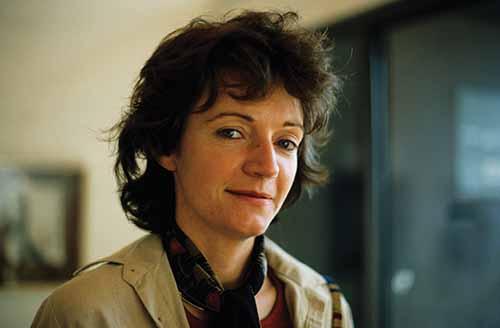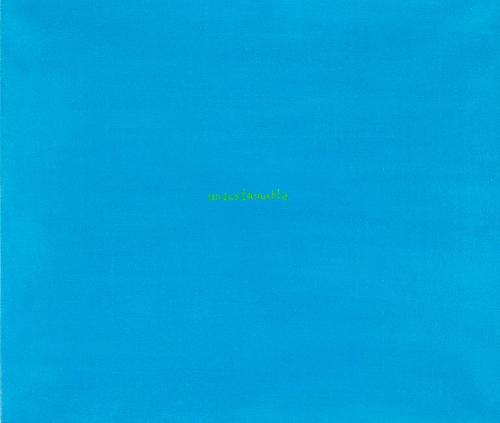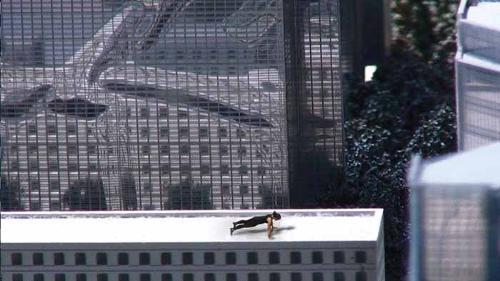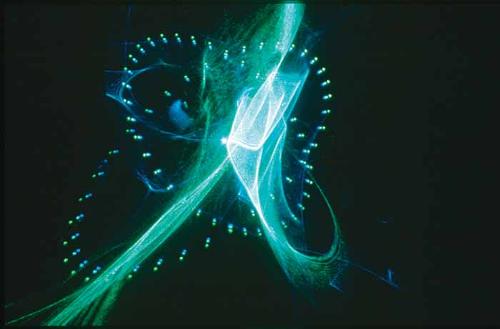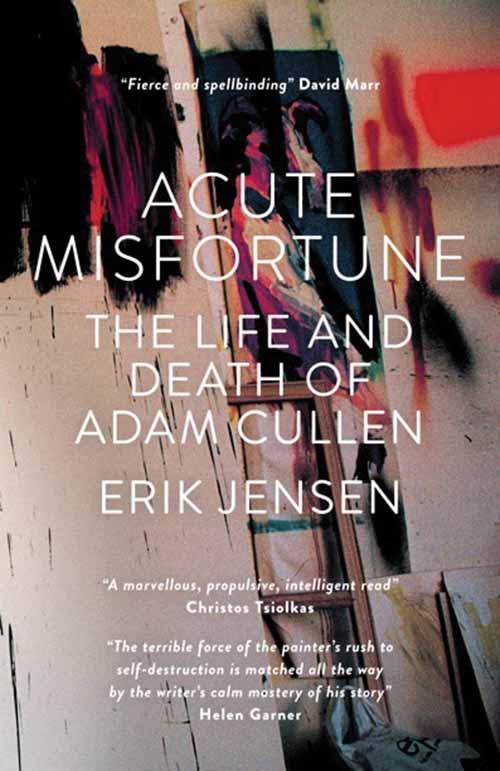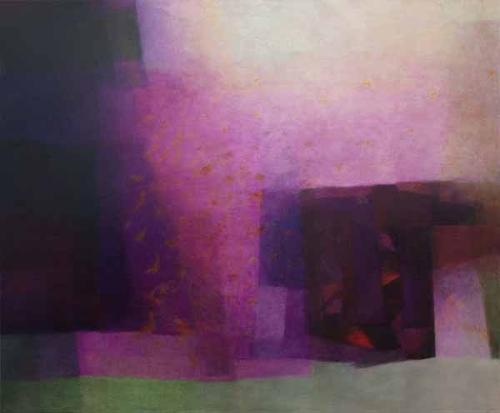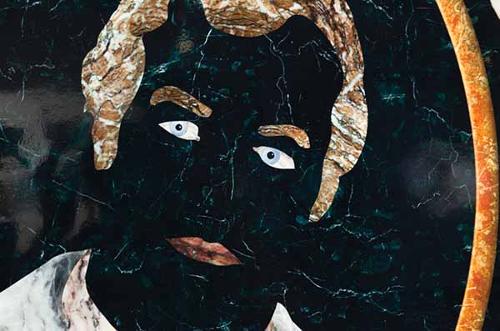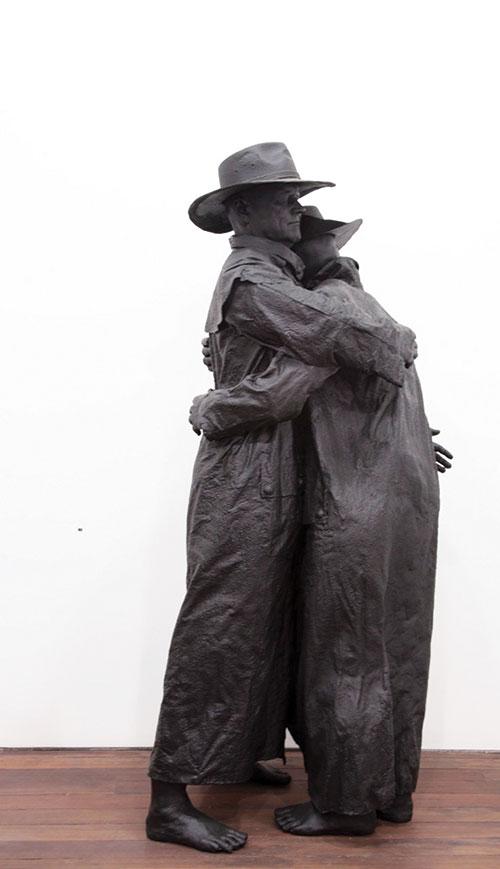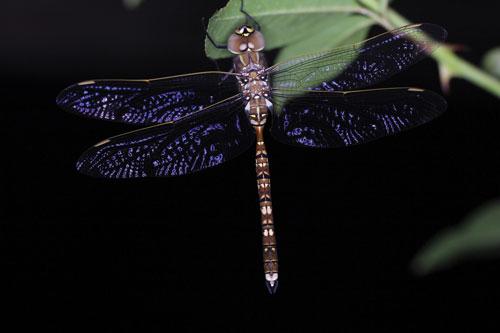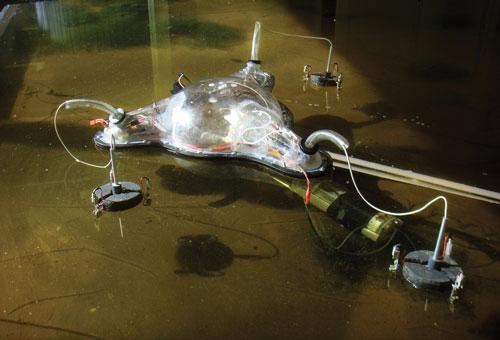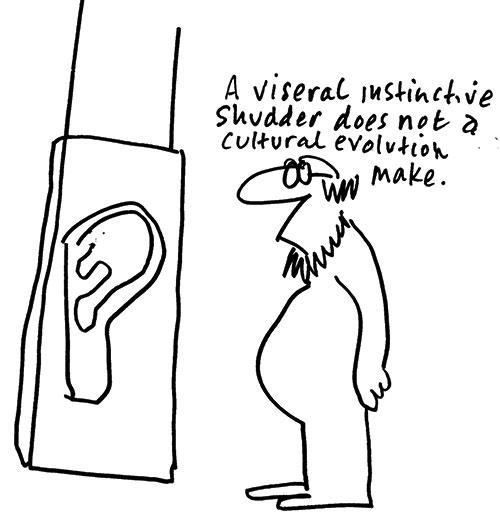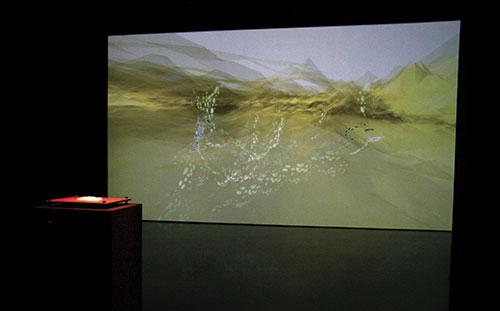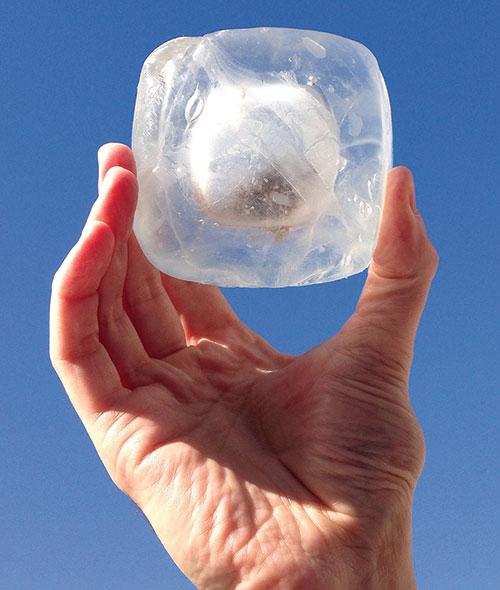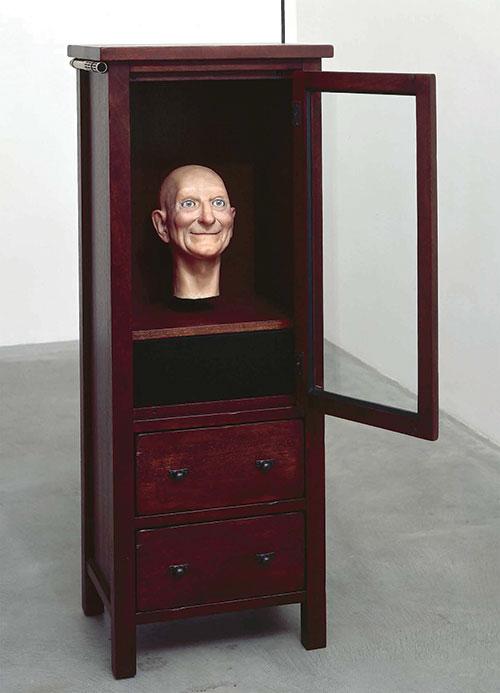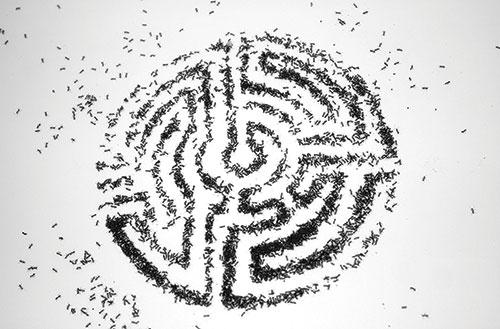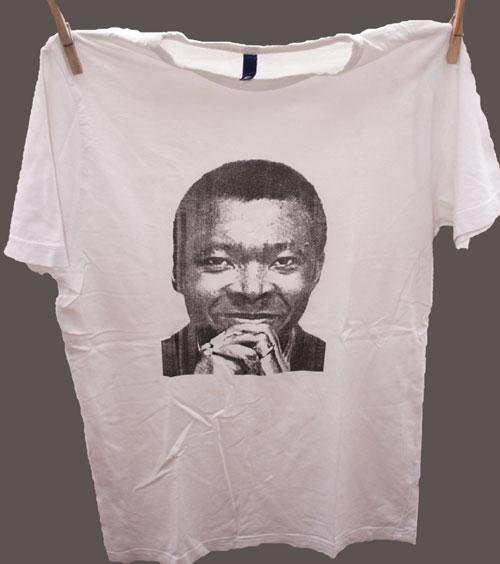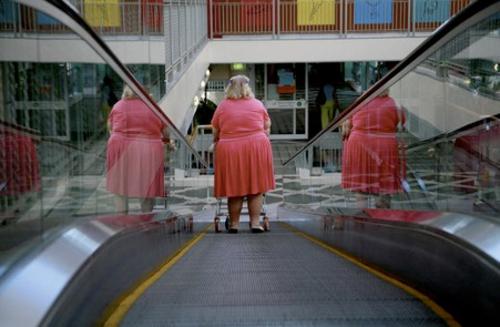Search
You searched for contributors, issues and articles tagged with Ecology ...
Contributors
Artlink
Alan Lee
Alex Selenitsch
Alice White
Allan Smith
Alyce Neal
Amelia Hine
Ana Marie Saaverdra
Andra Kins
Andrew Frost
Ann Finegan
Ann Wizer
Anna Dumitriu
Anna Zagala
Anna Jean Bonshek
Anne Kirker
Anne Marsh
Asha Bee Abraham
Bec Tudor
Belinda Daw
Ben Byrne
Ben Eltham
Beth Field
Brett Adlington
Brigitta Hupfel
Briony Downes
Cameron Stelzer
Carmen Ansaldo
Carmen Grostal
Carol Schwarzman
Carolyn Wilson
Cate Jones
Cath Kenneally
Catherine Murphy
Chris Orchard
Christina Barton
Christine Burry
Cliff Burtt
Cobi Labuscagne
Coby Edgar
Courtney Kidd
Craig Judd
Daena Mossman
Damien Minton
Danni Zuvela
David Bromfield
David Cranswick
David Engwicht
David Hansen
David Kerr
David Munn
Djon Mundine
Donald Brook
Dorothy Erickson
Elizabeth Gertsakis
Elizabeth Newman
Elvis Richardson
Emilis Prelgauskas
Eve Sullivan
Evelyn Hartogh
Fernando Balcells
Fotis Kapetopoulos
Gene Sherman
Geoff Levitus
George Dann
Gillian Marsden
Gini Lee
Greg Johns
Gregory Pryor
Helena Spedding
Ian Friend
Ian Hamilton
Ian McLean
Ian Milliss
Ian North
Inga Walton
Ingeborg Reichle
Ingrid Day
Iris Amizlev
Isabel Garcia
Ivan Henriques
Jacke Ohlin
Jacky Talbot
James Darling
Jamnes Danenberg
Jane Stewart
Janet Maughan
Janice Lally
Jean Bojko
Jennifer Johung
Jennifer Lamb
Jeremy Eccles
Jim Hamlyn
Jo Higgins
Joanna Mendelssohn
John Harris
John A Williams
Joni Taylor
Jude van der Merwe
Judith Abell
Issues
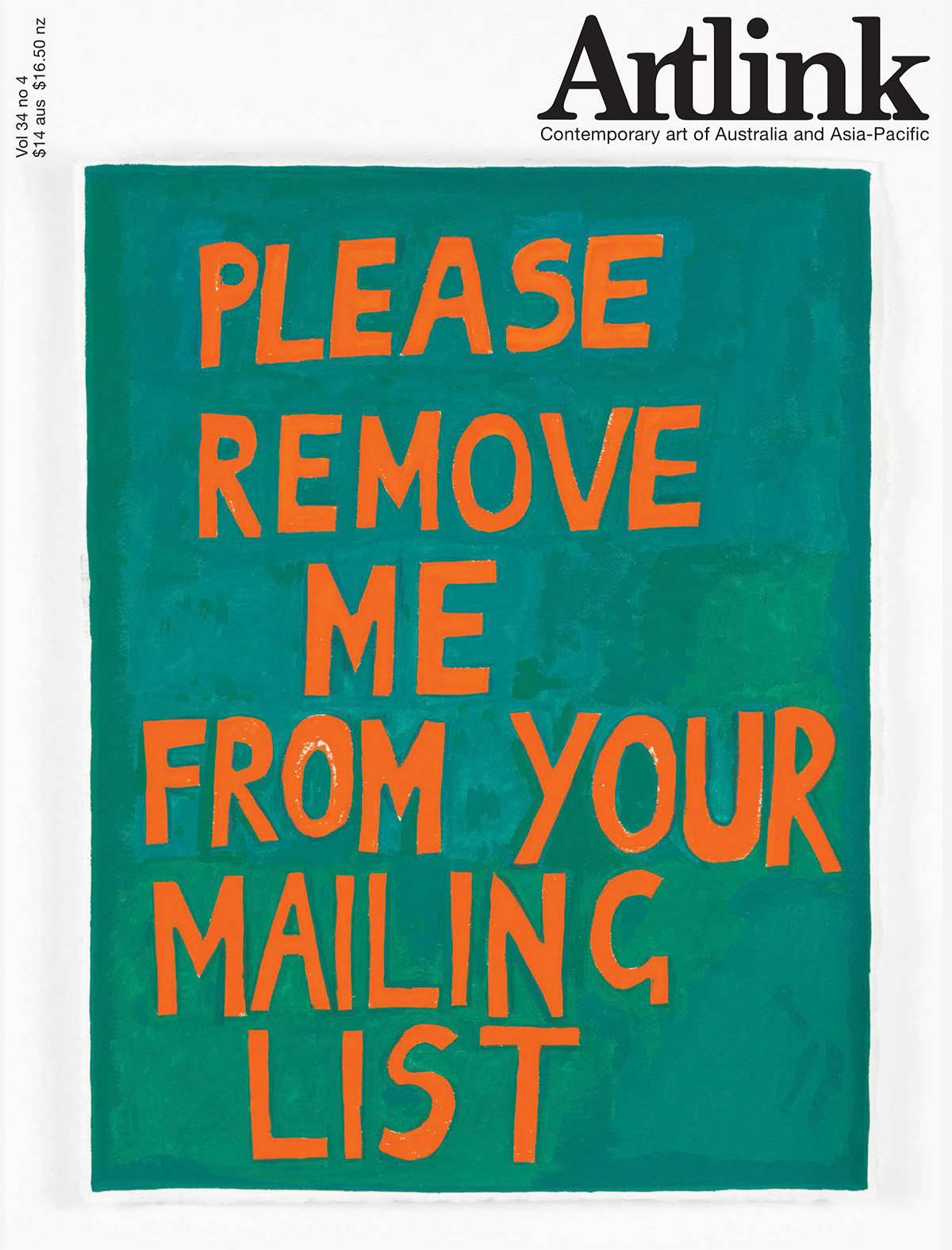
Sustainable?
Issue 34:4 | December 2014
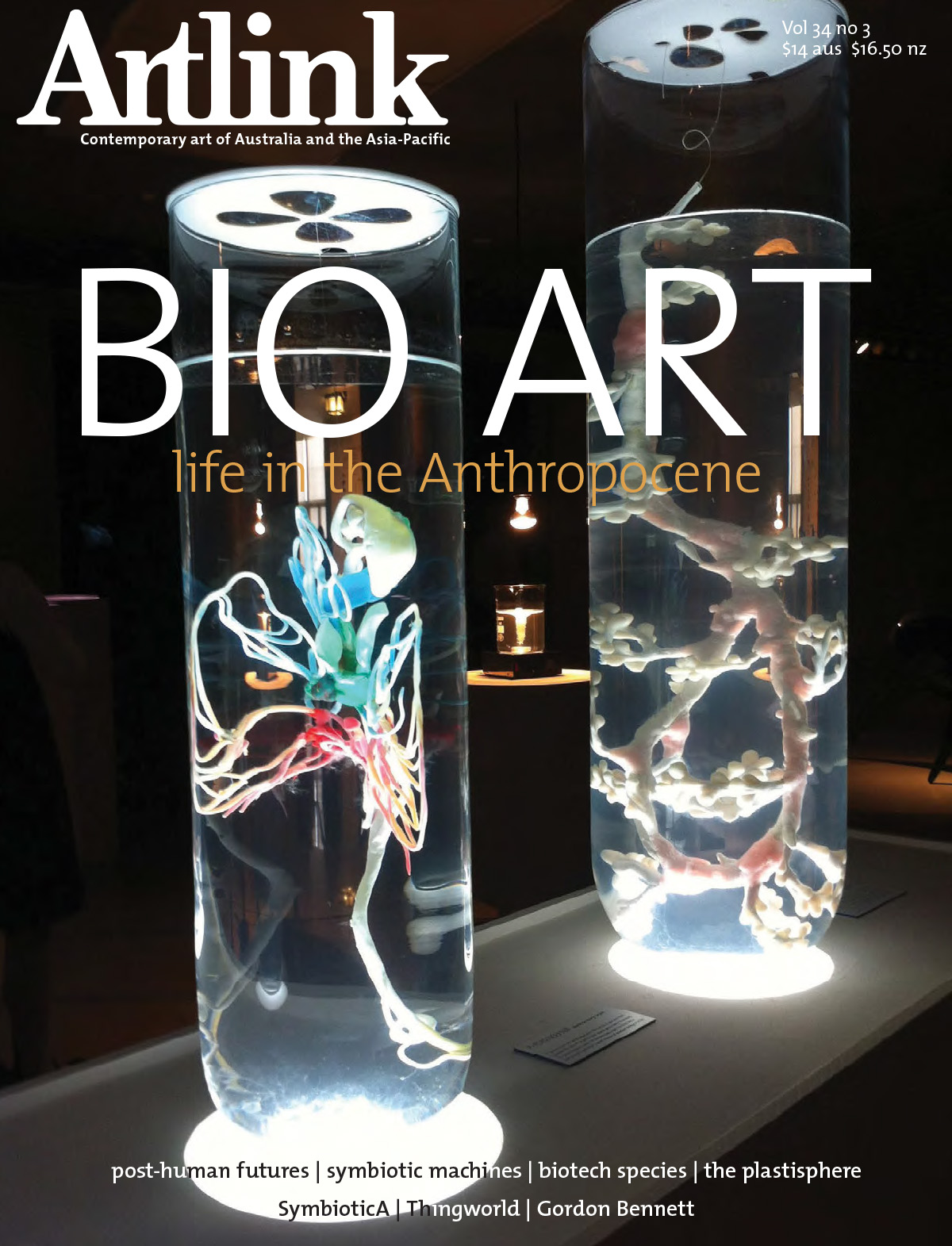
Bio Art
Issue 34:3 | September 2014
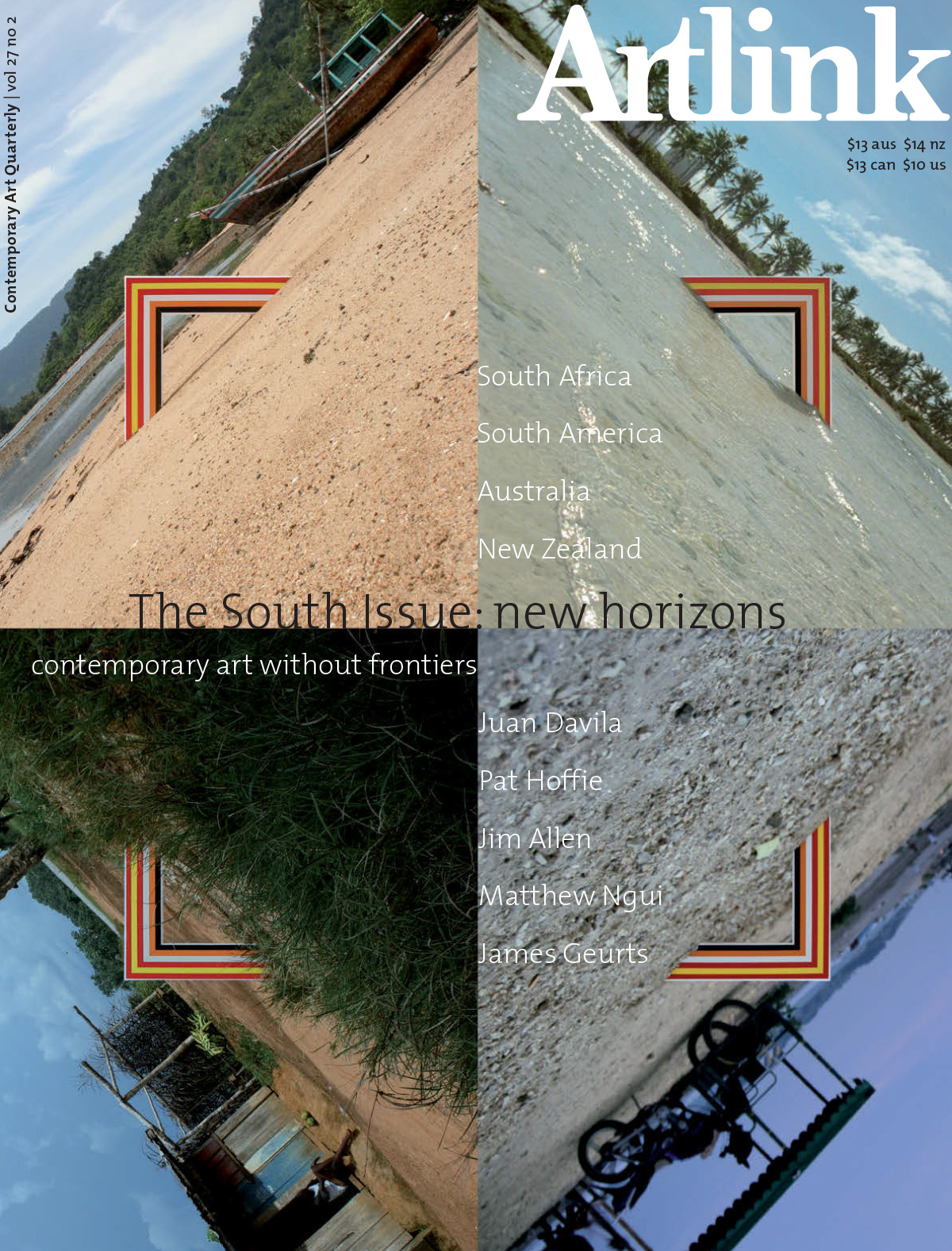
The South Issue: New Horizons
Issue 27:2 | June 2007
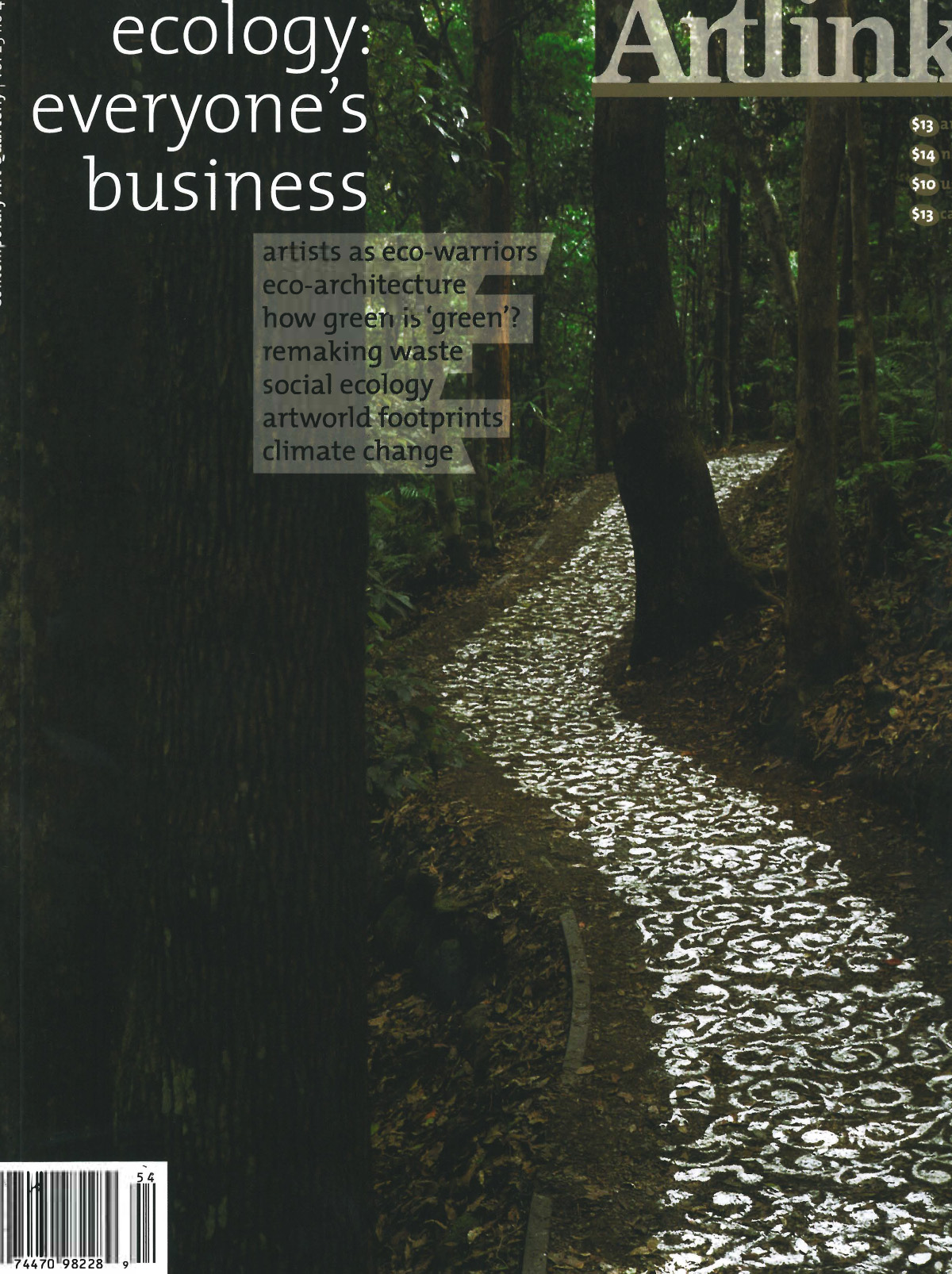
Ecology: Everyone's Business
Issue 25:4 | December 2005
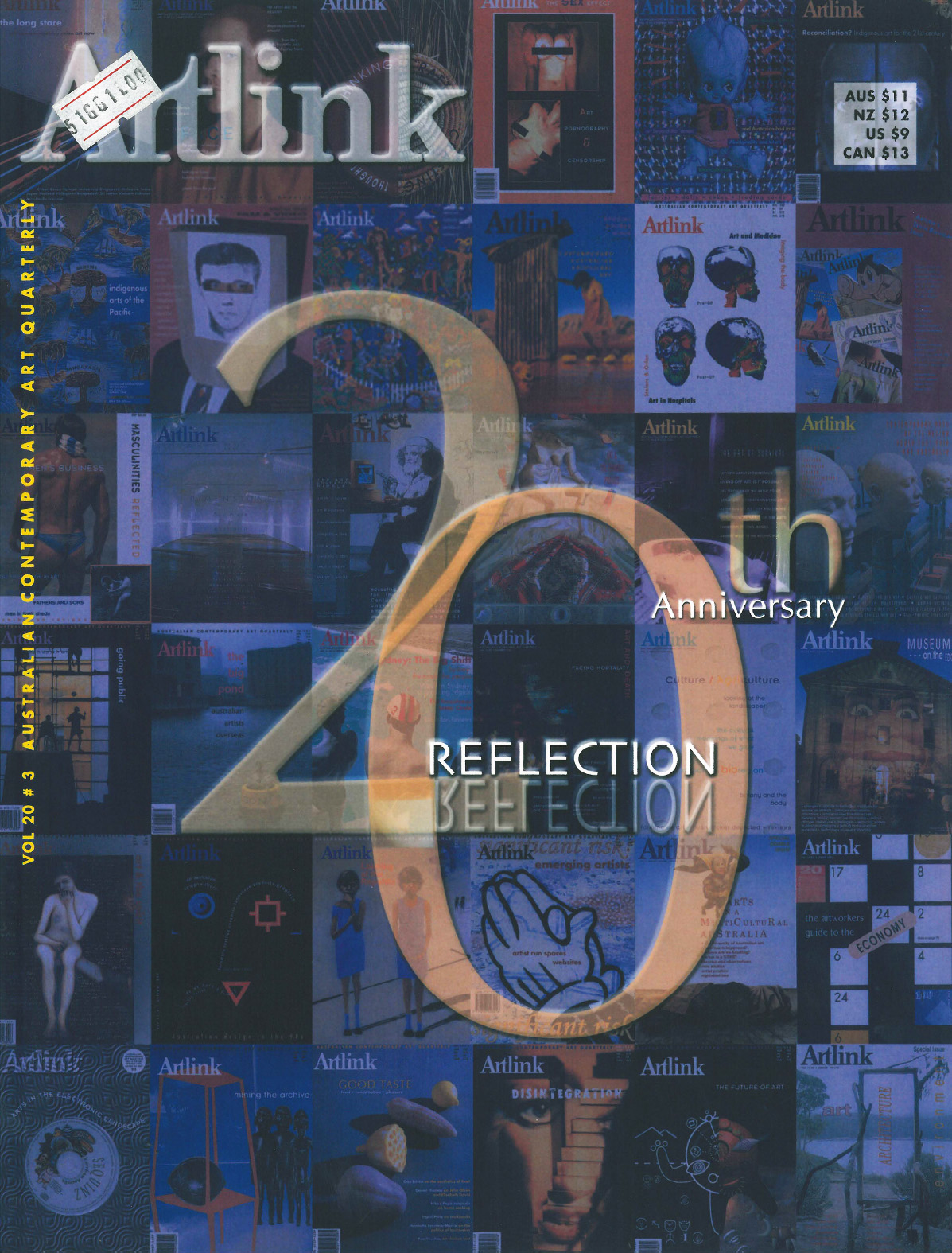
Reflection: 20th Anniversary Issue
Issue 20:3 | September 2000
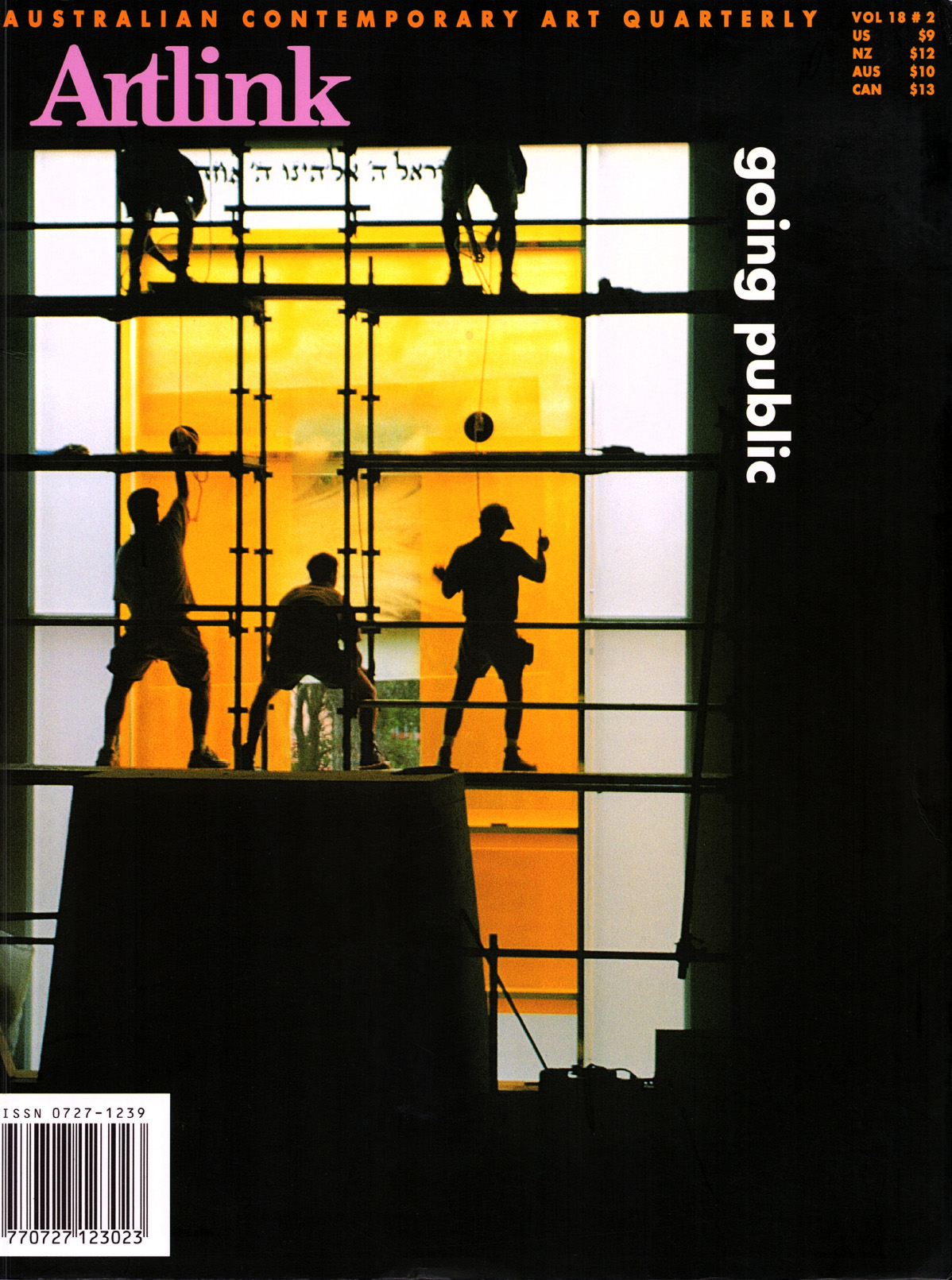
Public Art in Australia
Issue 18:2 | June 1998
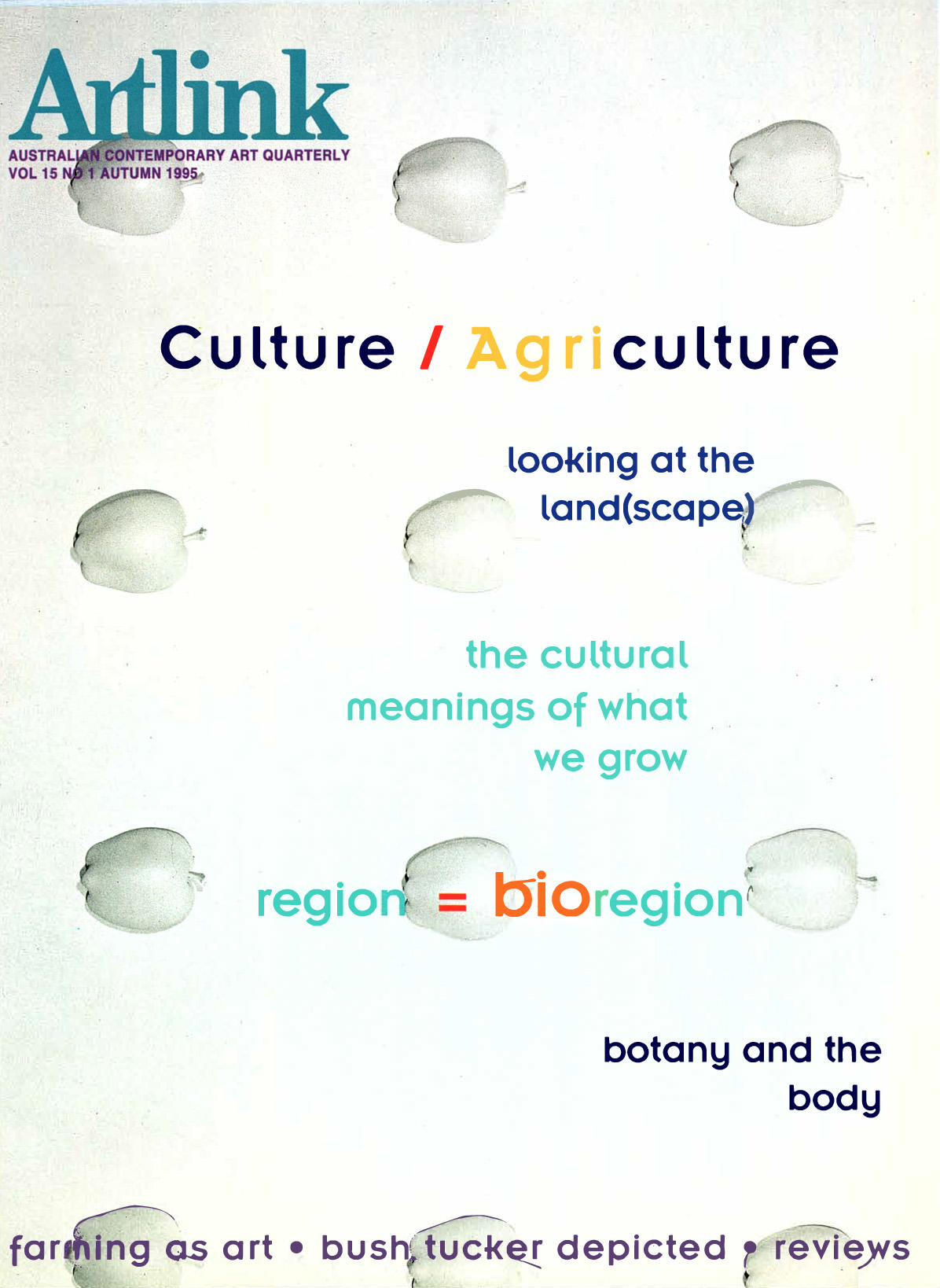
Culture/Agriculture
Issue 15:1 | March 1995
Articles

Culturally ambitious: Moving with the times
Joanna Mendelssohn on the Australia Council’s latest strategic plan.

The aesthetics and ethics of landscape design
Margot Osborne on the practice of Taylor Cullity Lethlean
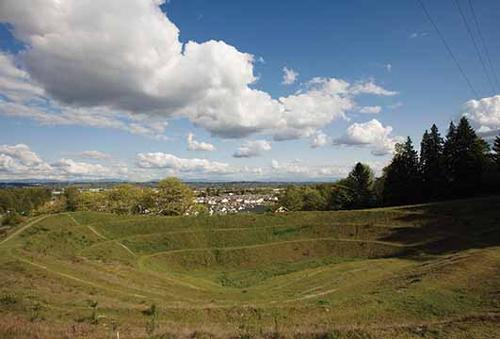
Red mud: Art and the post-mining landscape
Amelia Hine, Philipp Kirsch and Iris Amizlev on building sustainable landscapes and land shapes from post-mining space

Relational acts: Art, commoning and sustainability
Linda Carroli on creative practices that contribute to ‘the commons’

Valediction for a gallery: Following the art money
In 2001, the Damien Minton Gallery opened in Newcastle, moving to the inner Sydney suburb of Redfern in 2005. In August 2014, the gallery closed its doors for the last time. Here, Damien Minton reflects on the changing role of the commercial art dealer and the power of art money

The South South Way
How does the south appear to itself and how might south appear on the southern stage? The sweep of the south is broad and there are many ways to cross it. Kevin Murray considers the role of nature as a host of shared references for people and cultures of the southern hemisphere as well as ideas concerning indigenous and diasporic solidarity. Murray makes the point that it is on the political stage where the south seems particularly vocal, especially in relation to economic relations between north and south. The flow of traffic between north and south is also discussed, taking into consideration the infiltrating of modernism into Australia via its northern source and the shifting patterns in positioning the exotic gaze that is normally directed south. Murray concludes that, at this stage, the south remains a rare platform that welcomes both indigenous and non-indigenous, both tribes and individuals.

Juan Davila: Queering the South
Juan Davila's recent retrospectives, held in Sydney and Melbourne, affirmed the astonishing array of historical, political, artistic, and cultural references populating his oeuvre since his move from Chile to Australia in 1974. As Davila explains:
The circumstance of living in two extremes of the world, in two peripheral cultures, slowly forced me to look at the materiality of the circumstances where artworks operate
. This text examines the work of Davila as being, in libidinal and critical measure, queer, and the extent to which this provides a signifying key to the artists TransPacific vision. The term queer is not merely called upon as one bound by its sexual connotations but as one used to describe a generalised sense of deviation from normalcy, within which Davilas work is here positioned. Specific works examined are: The Arse End of the World, Fable of Australian Painting, Retablo and Our Own Death amongst other key pieces.

Defining Features: Africa
Cobi Labuscagne attempts to define some of the current definitions of self in Africas effort to introduce its answers to the world. Labuscagne sets up two important benchmarks for examination in this text. The first being a framework within which Jonathan Jones of the recent international exhibition Africa Remix sets up some definitions of Africa, art and contemporary, which Labuscagne sees as largely problematic and in need of renegotiation. The second benchmark is based on a volume of essays by Johannesburg-based cultural critic and academic Sarah Nuttal, which look at conduits of beauty and ugliness and the continual interaction with art and aesthetics.

Jim Allen: Now
Being ourselves part of Oceania and enjoying a close and somewhat unique physical relationship with the natural environment I think we are especially receptive to an artform which makes use of simple tactile media; paper, stones, gravel, sand, cloth and water, employed with such finite sensibility and sophistication
Jim Allen. To date, Jim Allen's contribution to the history of art in New Zealand has been discussed in terms of his achievements as a teacher, organiser and advocate for new dematerialised modes of practice. Recently Allen is being recognised for his role as the prime artistic mover behind the emergence of new multi-media, time-based, site-specific, performative, and installation modes of sculpture during the 1970s. Allens practice as an artist and his efforts as an arts organiser also helped prepare the ground for New Zealands growing involvement in the international arts arena. This article acts as a homage to one of the great figures in contemporary art, discussing key works such as Poetry for Chainsaws (1976) and O-AR Part 1 which are currently being re-staged/re-installed as part of a mini-survey show in Auckland.

The Video Archive, Chile
The Video Archive project at the new Centro de Documentacion de las Artes is located on the once bombarded Chilean presidential palace grounds. The aim of the archive is to recover the history of the 'video arts' in Chile via the establishment of a dynamic and flexible platform intended to provoke new interpretations of the video medium. The task of collecting three decades of video footage from a time of social and economic critique and upheaval has been a laborious process. In addition to research, the Centre also receives material from artists who seek to add to the historical perspective of video as an accessible and common technology in current artistic practice. Key figures in the forging of Chile's video art scene included Juan Downey (1940-1992), the collective known as Colectivo de Acciones de Arte (CADA), the Escena de Avanzada (The Vanguard Scene) artists, Eugenio Dittborn, Carlos Leppe, Magali Meneses, Sybil Bintrup, Gonzalo Mezza, Carlos Altamirano, Alfredo Jaar, Victor Hugo Codocedo, Carlos Flores and Juan Enrique Forch.

CADA: art and life: Chile
In the wasteland of Chile, post- Military Coup of 1973, the Coectivo Acciones de Arte (CADA) arose in 1979, formed by the sociologist Fernando Balcells, the writer Diamela Eltit, the poet Raul Zurita and the visual artists Lotty Rosenfeld and Juan Castillo. The role of CADA was forged via a necessity for theoretical and practical renovation of the national artistic undertaking and the urgency to reset this task towards the fusion of art and life. This article follows the various movements of CADA, often formed on the basis of public protest and artistic dissemination and considered to be social sculpture which referred to art as a proposal for the social construction of reality. CADAs work attracted and affected many people and became a great challenge of collective creation.

From an Island South: Tasmania to Pakistan
Sean Kelly reflects on the experience and the complexity of taking an exhibition initiated by Asialink called From an Island South of landscape work by Tasmanian artists, Bea Maddock, Richard Wastell, Julie Gough, David Stephenson, David Keeling, Philip Wolfhagen and Jonathan Kimberley with Jim Everett curated by Jane Stewart of the Devonport Gallery to Lahore in Pakistan. He found that the political side of the Tasmanian art and its use of traditional approaches to art combined with critical content had similarities with some art produced in Pakistan. He refers to the 2003-4 landmark show of contemporary Pakistan art seen in Playing with a loaded gun curated by Atteqa Ali.

Cape 07
Cape 07 was a large-scale contemporary African art event which took place in various locations across Cape Town, South Africa this year. Cape 07's main exhibition the Lions of Contemporary African Art featured the works of 45 African artists. The entire event was conceived as an attempt to establish creative dialogue between different artists and regions involved. This article briefly discusses some of the many venues and artists showcased as part of an event which was ultimately an edited version of the cancelled Trans Cape biennale. Cape 07 was curated by Gabi Ngcobo with Jonathan Garnham as project manager.
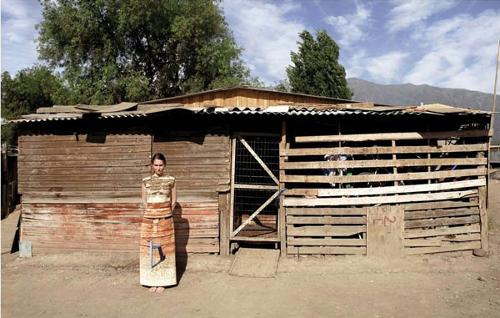
Galeria Metropolitana
Galeria Metropolitana is an independent and self-sustaining art space, allocated at a working class and semi-peripheral commune in the Southwest side of Santiago of Chile. Working primarily from a domestic space, the curatorial, production and management tasks carried out entail a radical challenge between art space managers, artists and neighbours or organisations. Galeria Metropolitana has become a kind of local 'institution of the alternative' and as a gallery project is considered unfinished, a permanent work in progress. The gallery is described as a self-reflexive space, not to be separated from its context, and works with art history (local-international), neighbourhood history and city history as its key concepts.

Walks and Transmissions: Santiago
Tom Nicholson is led by Galeria Metropolitana's co-director Luis Alarcon through an area of Santiago, which exists for the most part as a wasteland brought down during Pinoche's dictatorship. In one of the neighbouring suburbs, La Victoria, Nicholson learns of some of the area's history - being inhabited by landless people in 1957 - and of the commemorative action that takes place annually to mark this occupation. In accordance with these activities, Galeria Metropolitana held an event which featured the work of Aotearoan/New Zealand artist Daniel Malone and which brought attention to the different - and often conflicting - claims to truth with which words and images articulate experiences and aspirations.
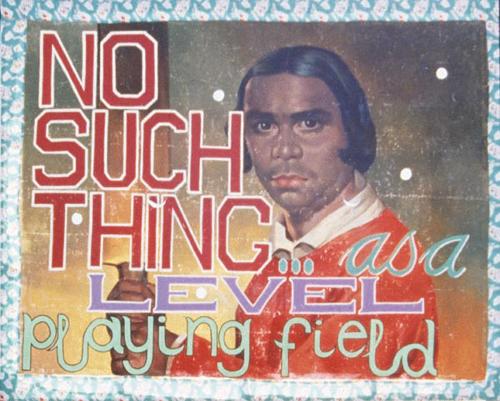
Pat Hoffie: Cultural Servitude
This article looks at the work of Brisbane-based artist Pat Hoffie and the way she flirts with acceptability in her quasi-ironic method of cultural exploitation. In her art the inevitability of cultural servitude to capital flowers into something more complex and generative, and demonstrates how the local can make its mark on global frameworks. Hoffie's technique shows a layering of activity within the field of contemporary art, broadening into a complex visual concept of cross-cultural dynamics. Her artworks include material that signifies its history of cultural exploitation and commercialisation. Artworks directly referenced here include: 'No such thing as a level playing field', 'Blackbirding Series', 'Avatars (The Committee)' and 'Madame Illuminate Crack's Pictorial Guide to the Universe'.

James Geurts: 90 degrees equatorial
James Guert's recent show at the Experimental Art Foundation in Adelaide is described through this article to have induced an almost trance-like state from the arrangement of the four square light boxes, depicting scenes from four sites of interception to the four large digital projections humming with visual and auditory stimuli. The focus of this text is on Guerts remarkable journey to the four corners of the globe. The corners are literally represented by smallish triangle objects of inner lit plastic photographed and composed to construct a full form of the globe. The way they are presented, as foreign objects in the landscape, raise questions about the way the west relates to the wider world. In the particular settings Guerts has used, all being sites on or near the sea, the corners are impositions, objects at odds with the surrounding environments. This is enforced as a reminder about the extent that the West continues to impose its will on even the most remote communities.

Matthew Ngui: public artist
Matthew Ngui is a Singaporean born, Australian artist who makes intriguing and engaging public artworks that embrace the history of a given site. Ngui is fascinated by the ways in which we interact with artworks and the individual nuances and understandings each person brings to the encounter. Ngui describes his work as often loose, and multifarious, sometimes tenuous and always fragile. Scale and ambition are other easily identifiable elements in Nguis practice, whether it be transforming a cityscape with lights or covering a Swiss Village in an avalanche of 350,000 bouncing balls, each emitting a light and a whispered message.

Tributaries: South Africa
This article acts as a rough guide to recent art from South Africa. With galleries having multiplied during the early 2000s, the current state of contemporary art in South Africa is so that there are various major galleries, artist-run spaces, community arts centres, municipal galleries and museums and corporate collections helping to sow the seeds of what might in the near future become a more dynamic art circuit.
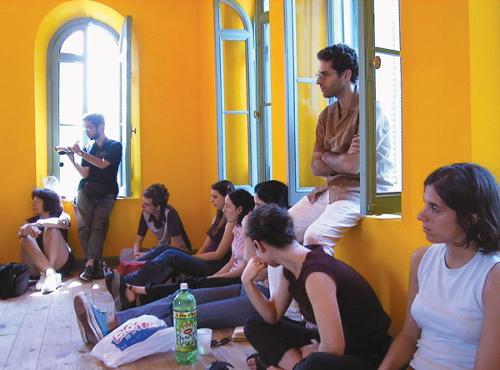
Trama 2000-2005
TRAMA was initiated in Argentina in 2000 by a group of artists. Rather than look for certainties, TRAMA created a context to share and confront questions, experiences and ideas. This article quotes various key figures involved in the collaborative practice of TRAMA, which, in 2006 became a network of artist led initiatives, formed by: La Agencia (Buenos Aires), El Levante (Rosario), La Baulera (Tucumán), Tallerh (Córdoba) and VOX (Bahía Blanca).

TRANS VERSA: Santiago
Co-curators Zara Stanhope and Danae Mossman discuss TRANS VERSAa project by thirteen artists at three venues in Santiago as part of The South Project gathering. Through this conversation Stanhope and Mossman discuss some of the challenges and aims of the project - to avoid being the importers of pre-existing art and to create an interest in engendering collaboration, with the fundamental idea based on flow and movement across geography. This discussion engages notions of globalisation, communication, knowledge and various cross-cultural agendas.
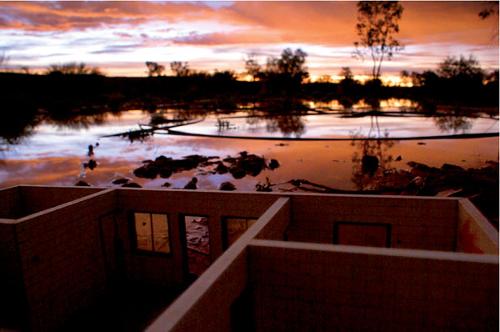
Indomite: a Chilean artist in Central Australia
I have always felt a deep fascination during the contemplation of what we call nature, its circular logic, its monumentality, its disorderly perfection
- Ortega Through this text Leonardo Ortega documents his travels through the Australian desert where he lived out his curiosities about the Aboriginies who inhabit the lands, with their political and social situation becoming the central subject for his video-installation INDOMITE exhibited in Melbourne in 2006. This project continues on from Ortega's previous artwork The Ralco Model exhibited at Galeria Metropolitana, Santiago. As Oretega explains of the intention of these works and his practice at large I try to document diverse human subjectivities in a world that tends to homogenise those experiences. I try to rescue difference in a time when equality has stopped being a real humanistic value
.

Selling Emily: confessions of a white advisor
In this article Philip Batty, a former art teacher at the Aboriginal community of Papunya offers some personal reflections on his involvements with the rise to fame of indigenous artist Emily Kngwarreye and other indigenous pieces and attempts to make sense of them. Batty discusses some of the problems associated with viewing these traditional works within the Western framework of modern art. He proceeds to offer some speculative answers as to how various political, economic, historical and aesthetic conventions transformed Aboriginal religious business into art. Batty uses the work of Emily Kngwarreye to exemplify how indigenous works can become merely a mirror image of European desires.

Subject Matters: South Africa
In recent years the growing intellectual input of young art practitioners, supported by Africans in the diaspora, is successfully managing to extend and complicate South African critical art discourse. It is here contested that artists across the non-white spectrum are reclaiming a notion of blackness as a political discourse to deconstruct and reject a normative white gaze that has not yet fully come to terms with its colonial and apartheid past. Since the birth of South African democracy in 1994, a whole range of art exhibitions and research projects have been mounted in public arenas, which reflect on these ideas. This article examines this with direct reference to the works of Frantz Fanon, Thembinkosi Goniwe, Gabi Ngcobo, Stuart Hall, Thando Mama, Liese van der Watt and others.
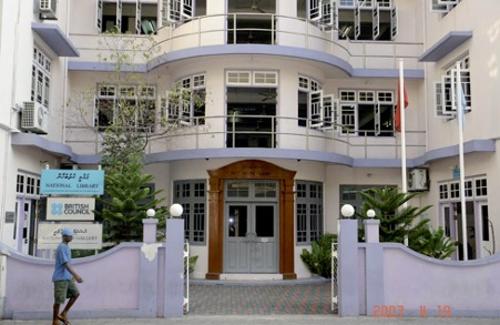
New Contemporaries: Issues of Identity in Maldivian Art
Mamduh Waheed discusses the current state of the arts in the Maldives, a country for which the word art has no formal existence. Despite this fact, there is plenty of art to speak of. The opening of the countries National Art Gallery in 2005 saw the exhibition Maldives Contemporary 2005 which included a display of local and international art. Subsequent to this was the establishment of a National Centre for the Arts, which focused primarily on the facilitating of academic and technical education in the arts and crafts. This article also looks at the role of tourism and trade as avenues for art and discusses the role of a group of younger local artists Waheed has here termed the New Contemporaries.





